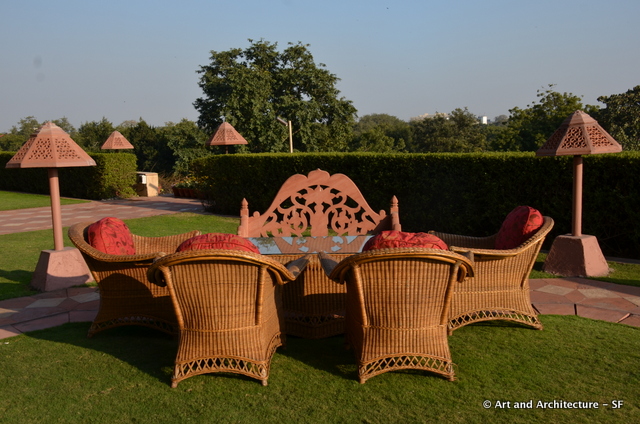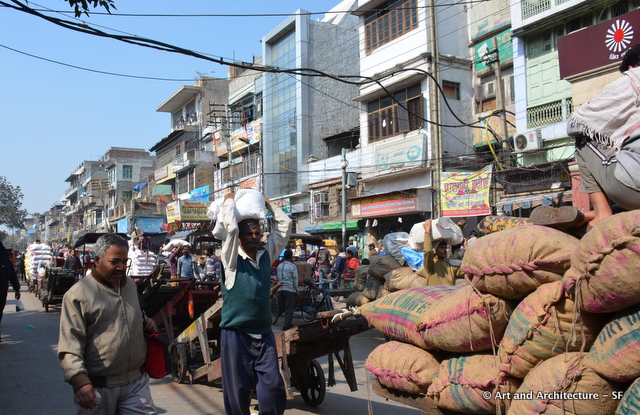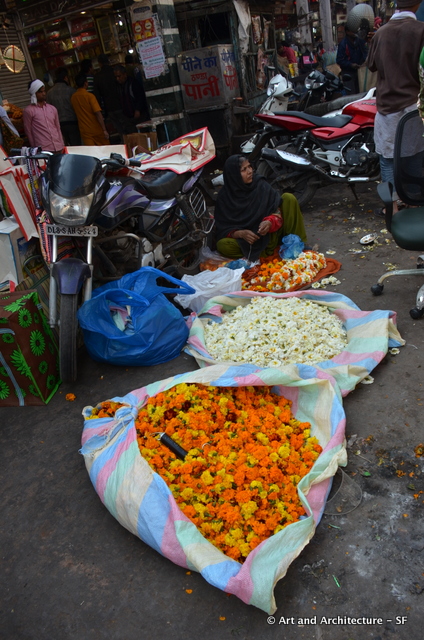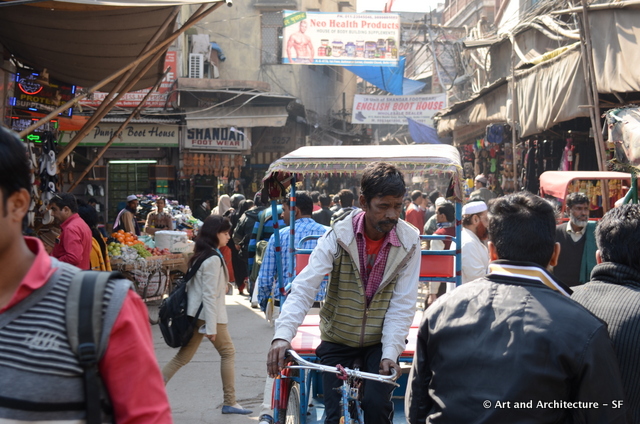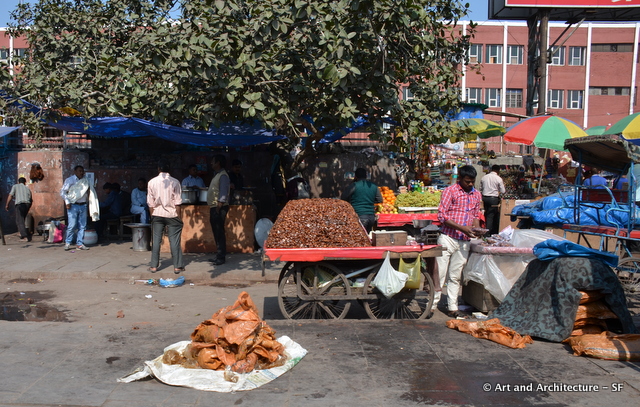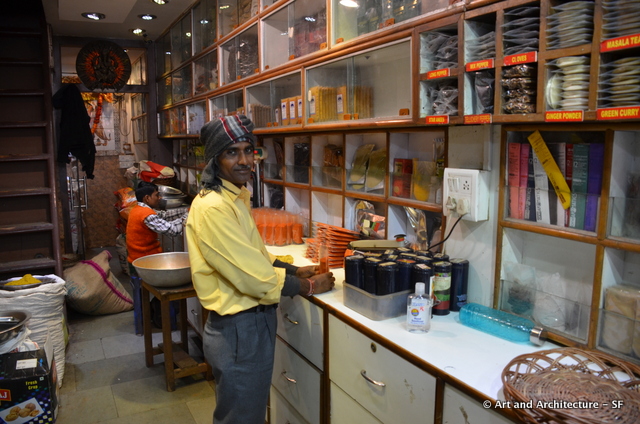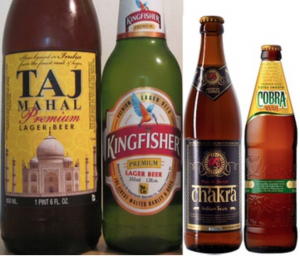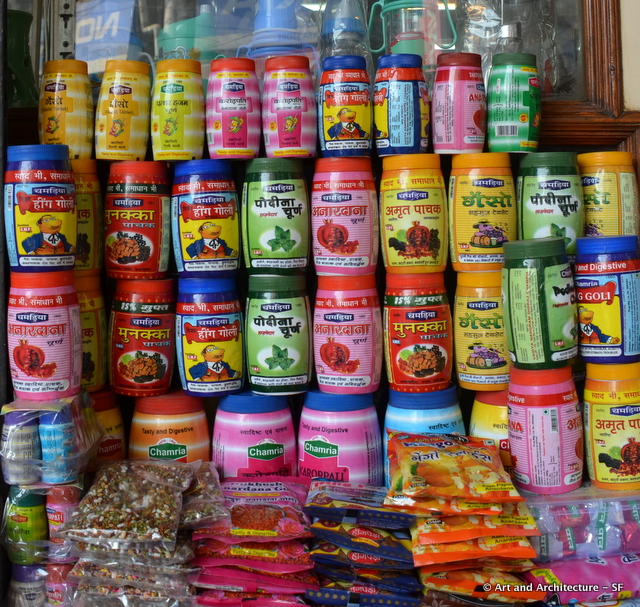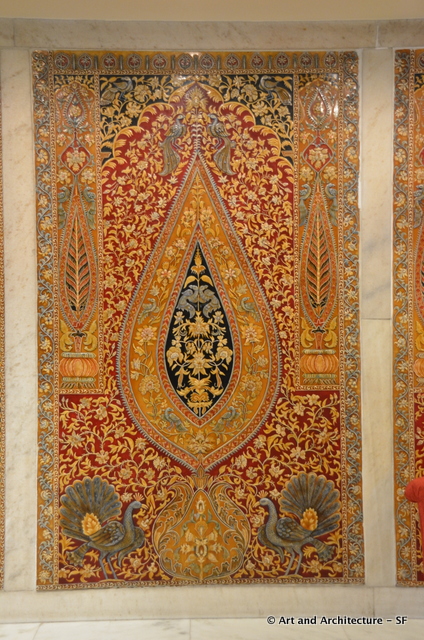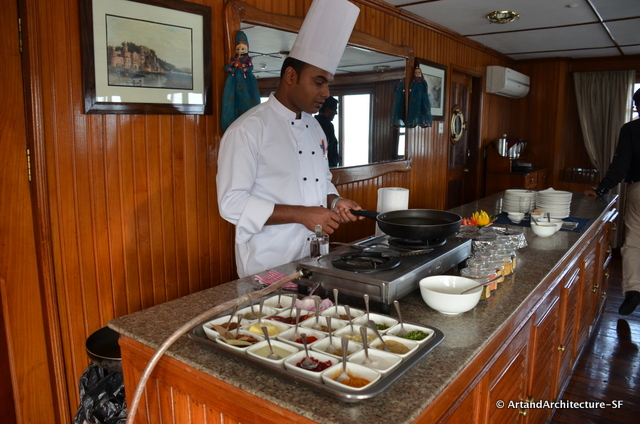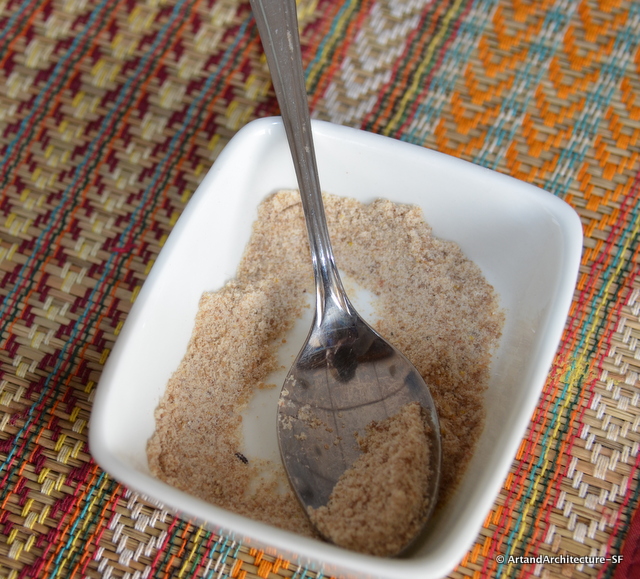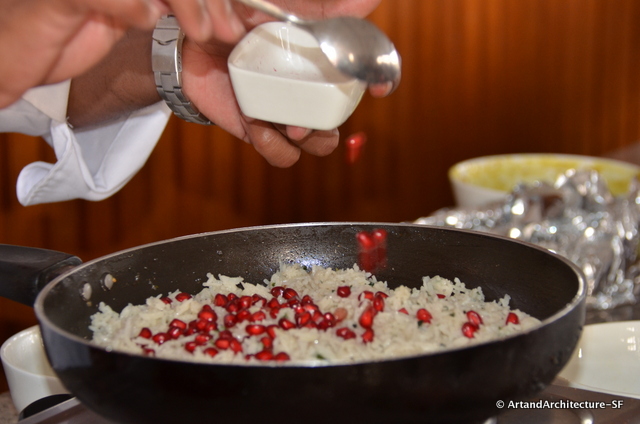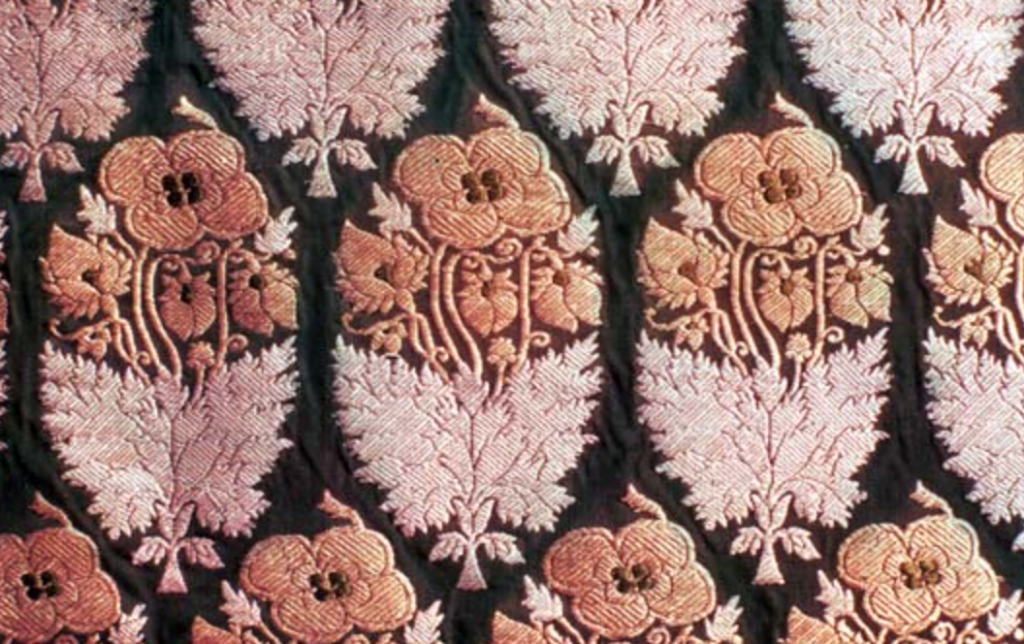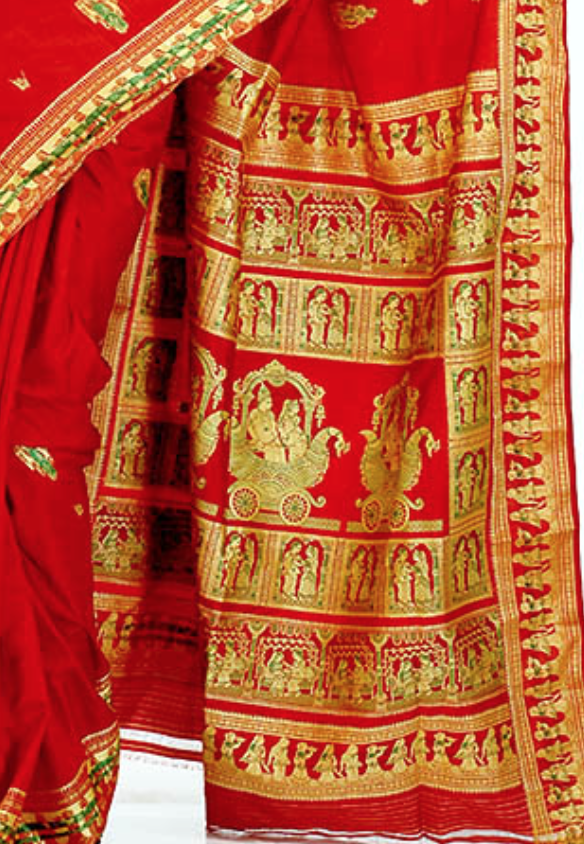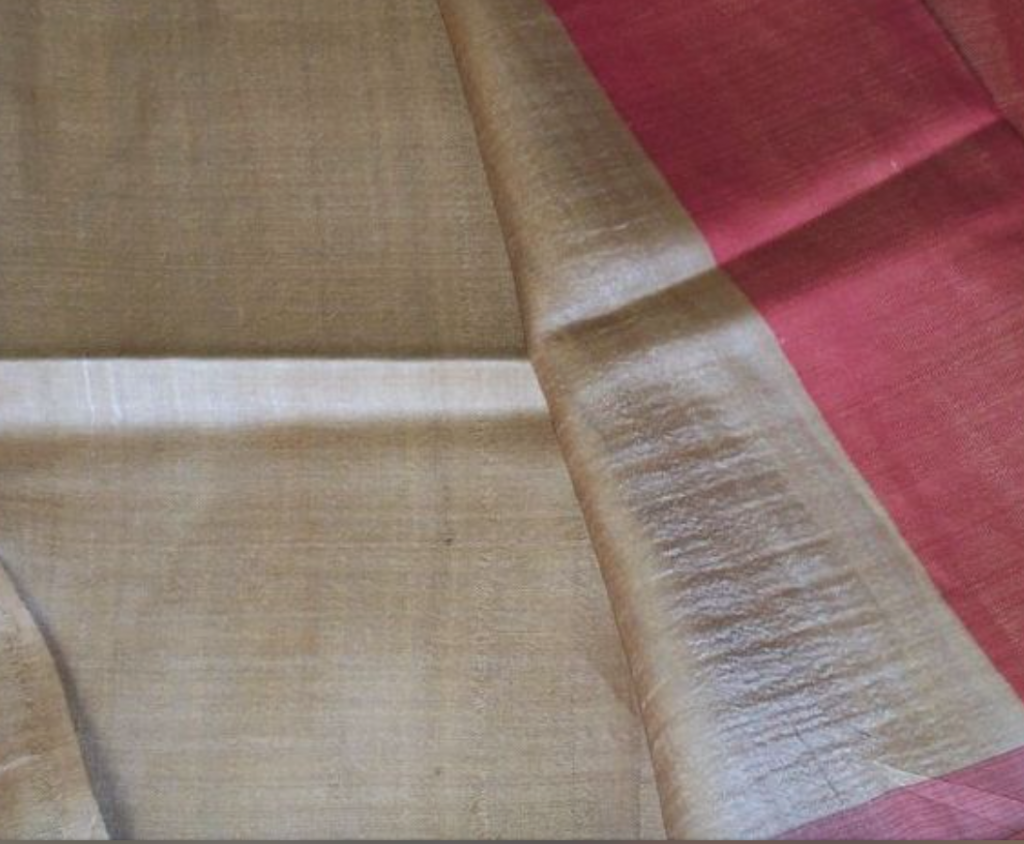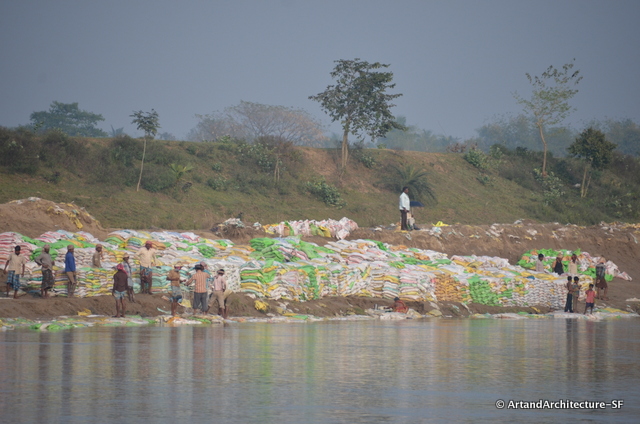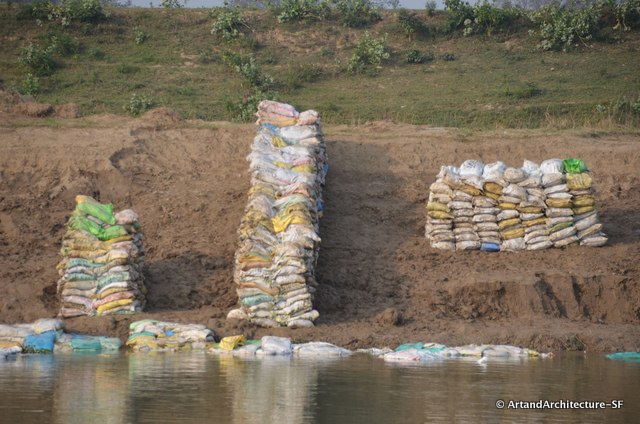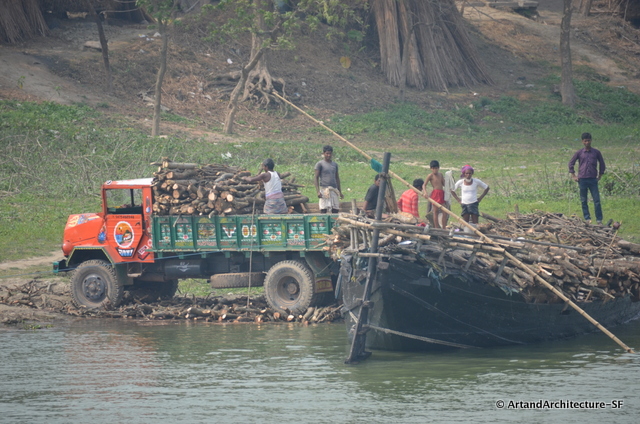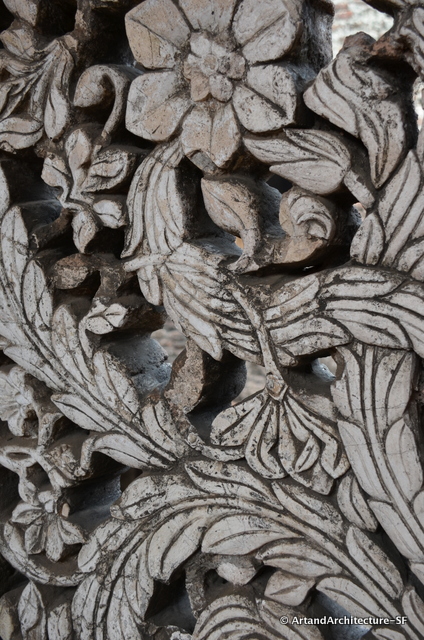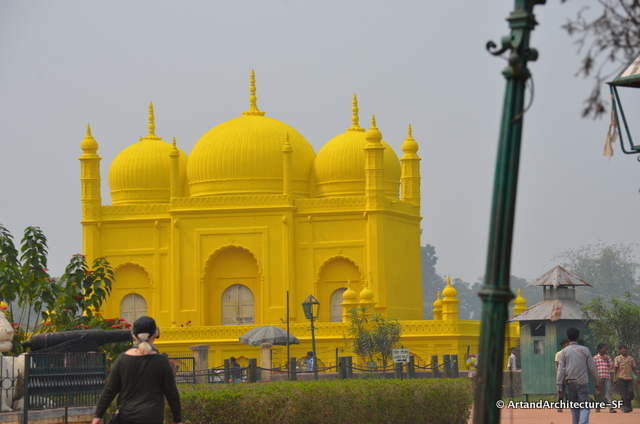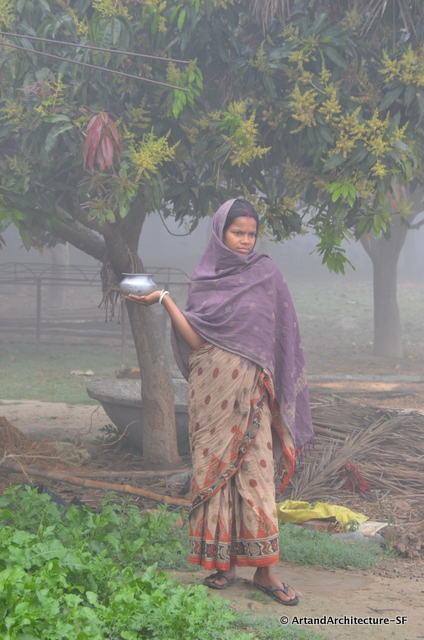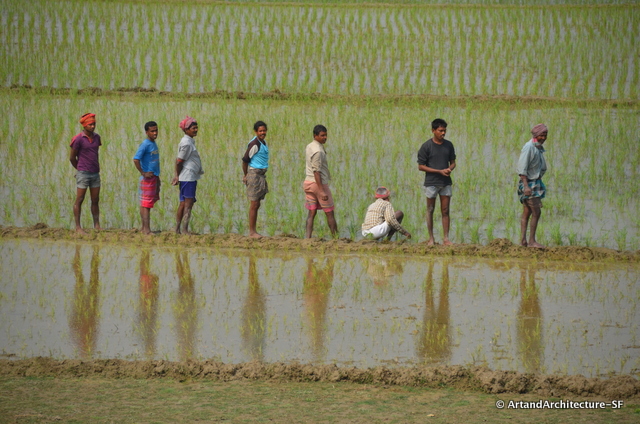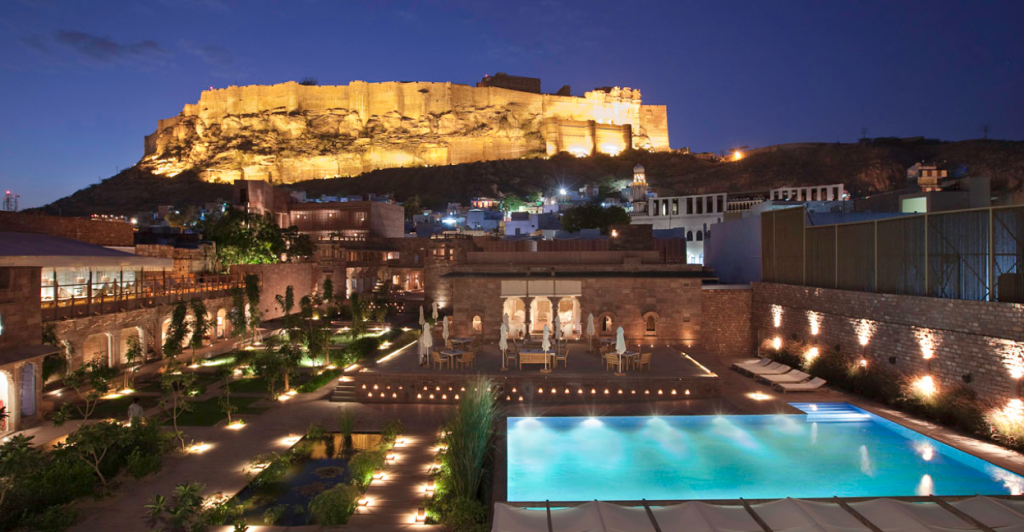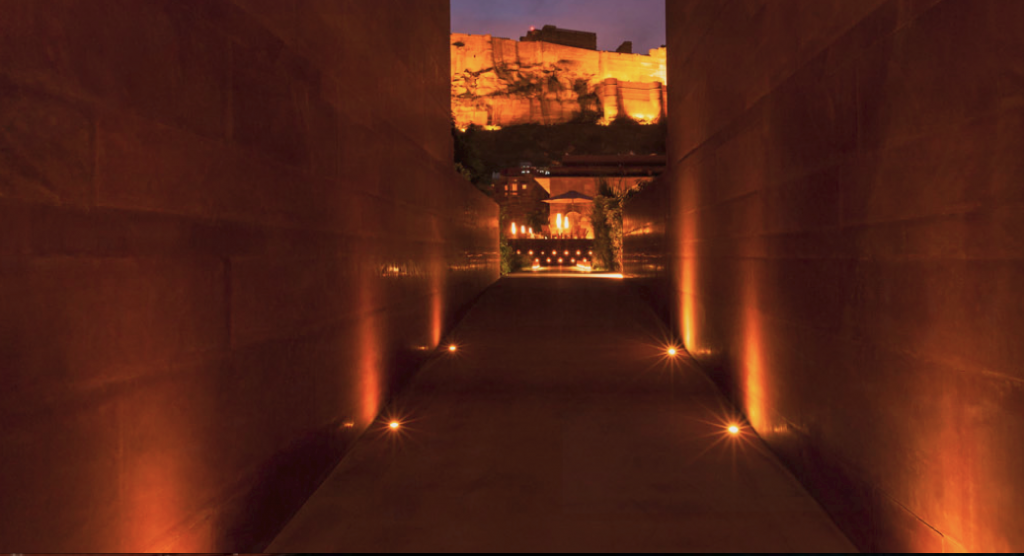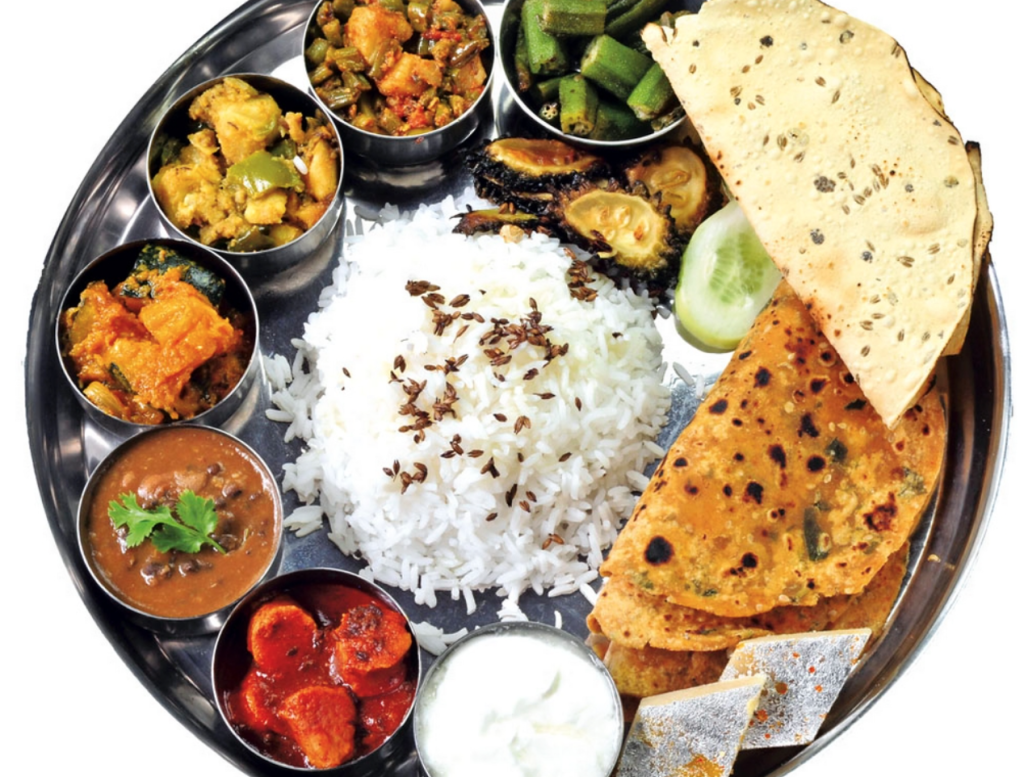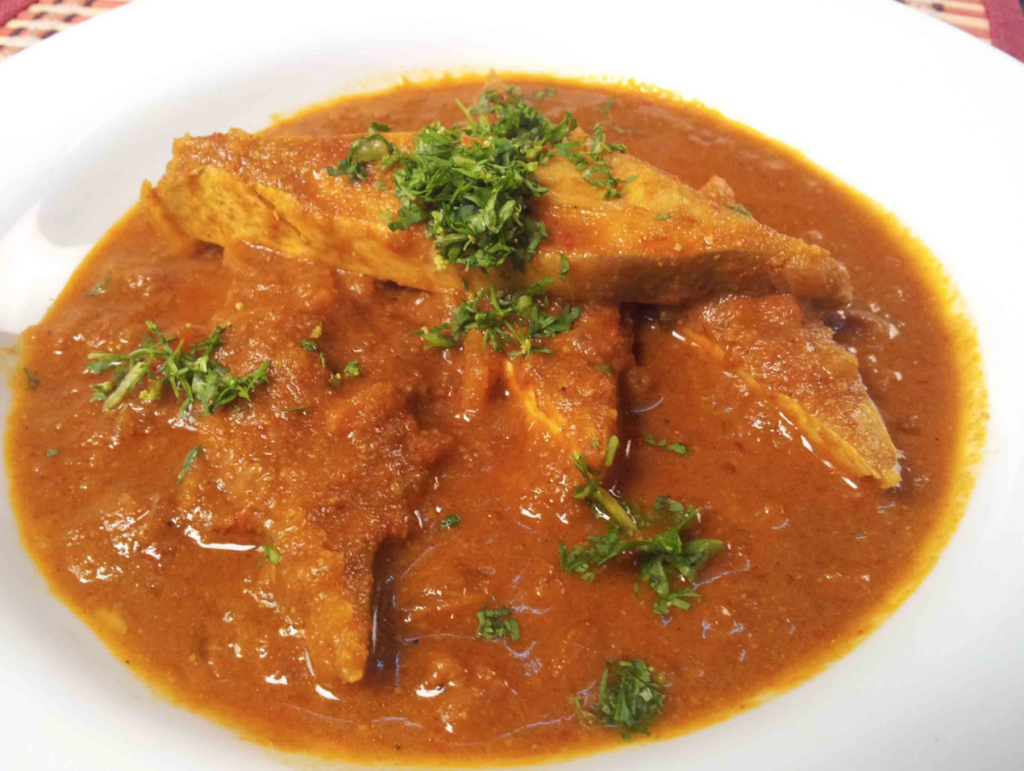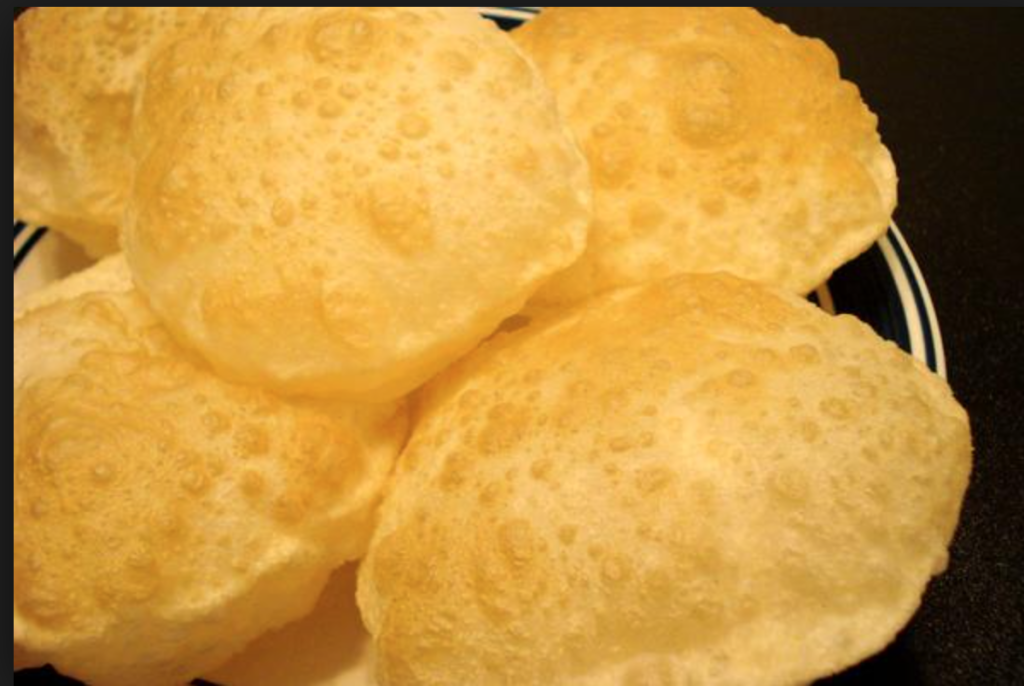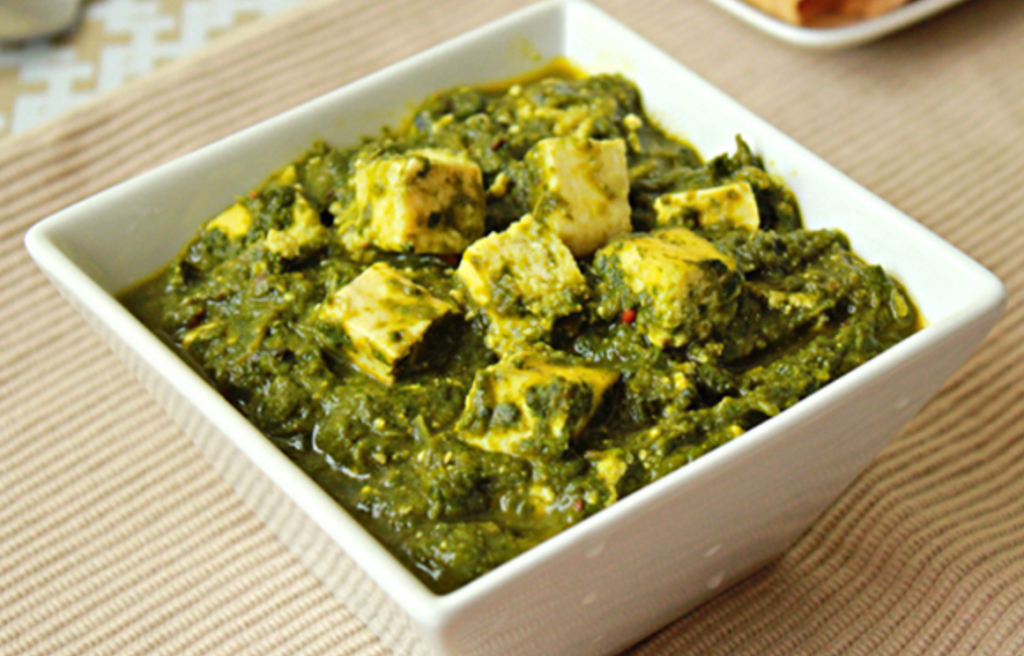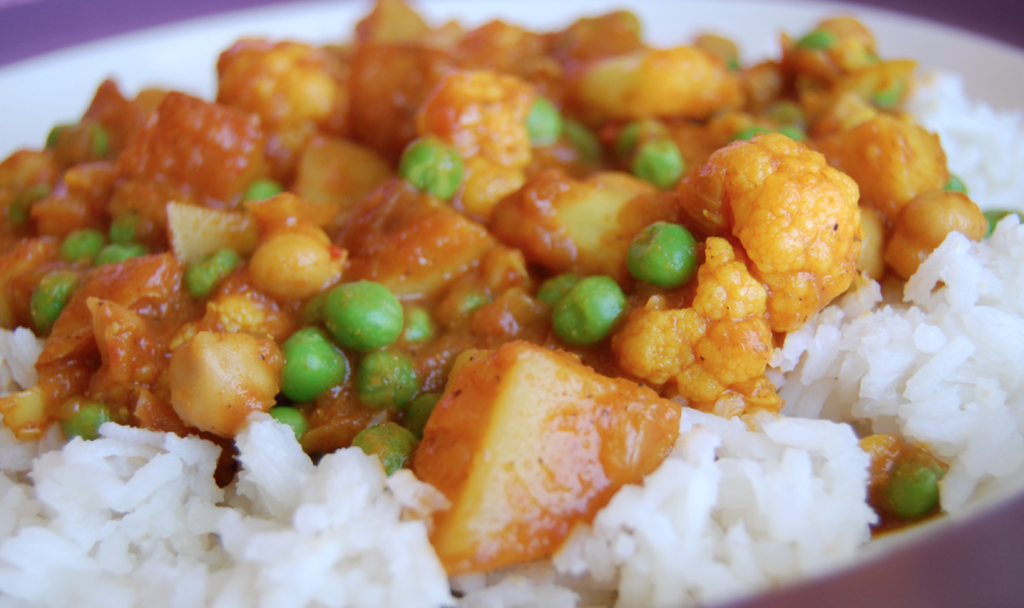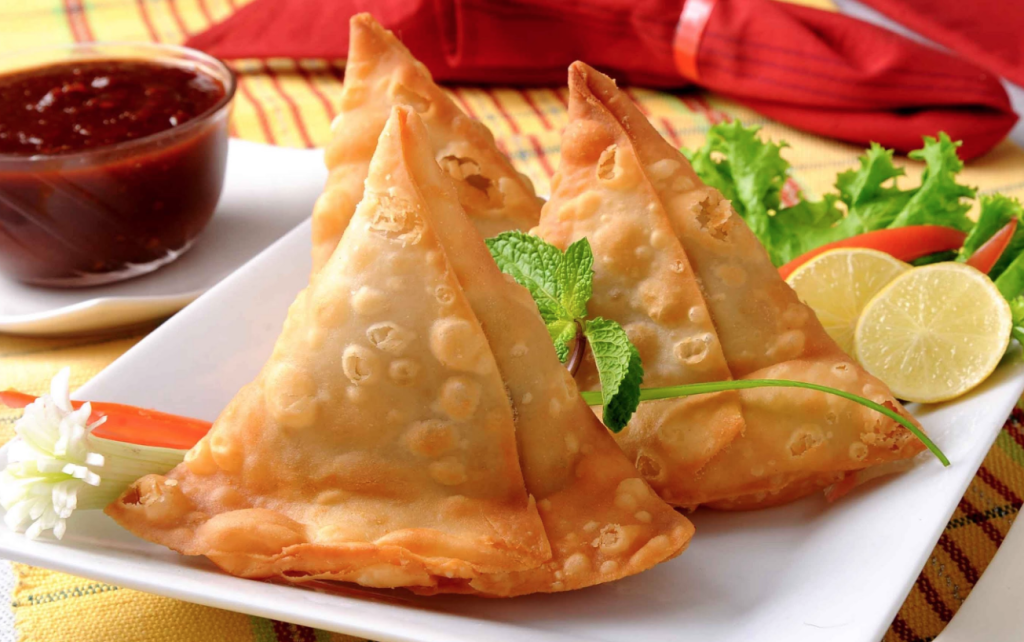New Delhi
A reminder of once again how brutal the flight is from California to New Delhi with an arrival at midnight, but a few hours sleep and a good cup of coffee and the day begins…
I think it should be de requeur to spend the first day in Delhi with a rickshaw ride in old Delhi. The noise the insanity, the crowds and the color, all an introduction to what is to come.
It is day one of my trip and on my own, so a short jaunt out to get acclimated before joining the tour group tomorrow, 550 rupees an hour for a rickshaw and a walk through the market. I would have enjoyed a little bit more, but it was obvious that the rickshaw driver I hired really didn’t want to take the time to take me around if I wasn’t spending money is his “brothers” shops. So alas, the streets were too crowded after the first stop. It was okay, an hour and a half is more than enough to get the flavor and time to head back to the hotel.
*
*
*
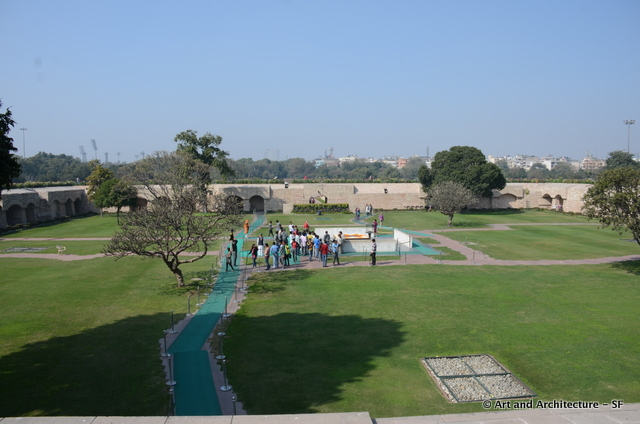 I also made a stop at the Mahatma Ghandi Garden or Raj Ghat. This was always an historic ghat on the Yamuna river. Raj Ghat loosely translates to King’s Bank (where King alludes to the importance of the place and Bank, because it sits on the river Yamuna).
I also made a stop at the Mahatma Ghandi Garden or Raj Ghat. This was always an historic ghat on the Yamuna river. Raj Ghat loosely translates to King’s Bank (where King alludes to the importance of the place and Bank, because it sits on the river Yamuna).
The memorial consists of a black marble platform and an eternal flame marking the spot of Mahatma Gandhi’s cremation, on January 31st, 1948, one day after his assassination.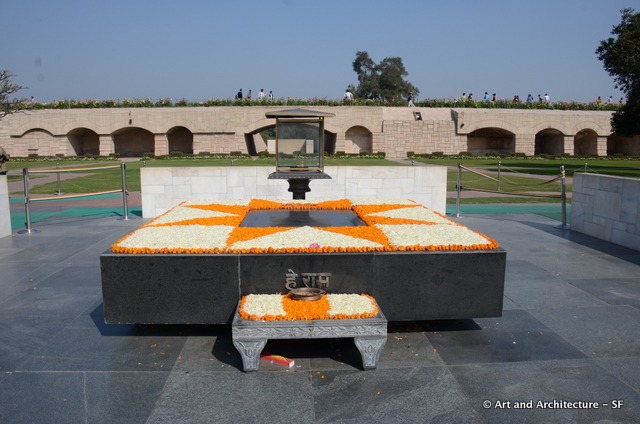
The words inscribed on the marble read “Hey Ram”, reportedly to be his last words. In the First Information Report (FIR) filed with the police, the last words uttered by Mahatma Gandhi are reported as ‘Ram… Ram!’ (Oh! God).
The flowers are changed daily, and you must remove your shoes in order to enter the lower section of the memorial.
It is a lovely and very peaceful spot, despite the many, many school children encountered today.
Today is the day they count the votes for an election in New Delhi, so why the photo of beer?
Republic Day, Gandhi’s birthday, as well as a host of other days, including 48 hours before an election, as well as, the day that the votes are counted, are all dry days in India.
The Indian government has never been particularly favorable on the subject of alcohol, most likely due to Gandhi’s objection to it. In 1937, when the Indian National Congress came to power, they instituted prohibition. In 1939, the British abolished prohibition. When India gained independence in 1947, prohibition was encouraged but it was left to the discretion of individual states.
This is not a religious issue as Hinduism allows alcohol, while, of course, Islam and Sikhism do not.
While you can read about the problem of alcohol in India it appears that banning it outright doesn’t work and it has led to a real problem of illegal brews that often blind or kill the imbibers.
Apparently days before these holidays, handwritten signs will go up outside off-licences across the country warning patrons that they have fewer than 24 hours in which to stock up but that can easily be circumvented I hear with a wink and a tip to a cab driver for non-locals.
The weather was a perfect 72 degrees F, but the smog, as always, leaves me with a headache, at least until I get used to the terrible air, and I am sneezing like crazy.
I am staying at the Taj Hotel, while lovely, I do not believe it to be as nice as the Oberoi.
Until tomorrow – Namaste.
